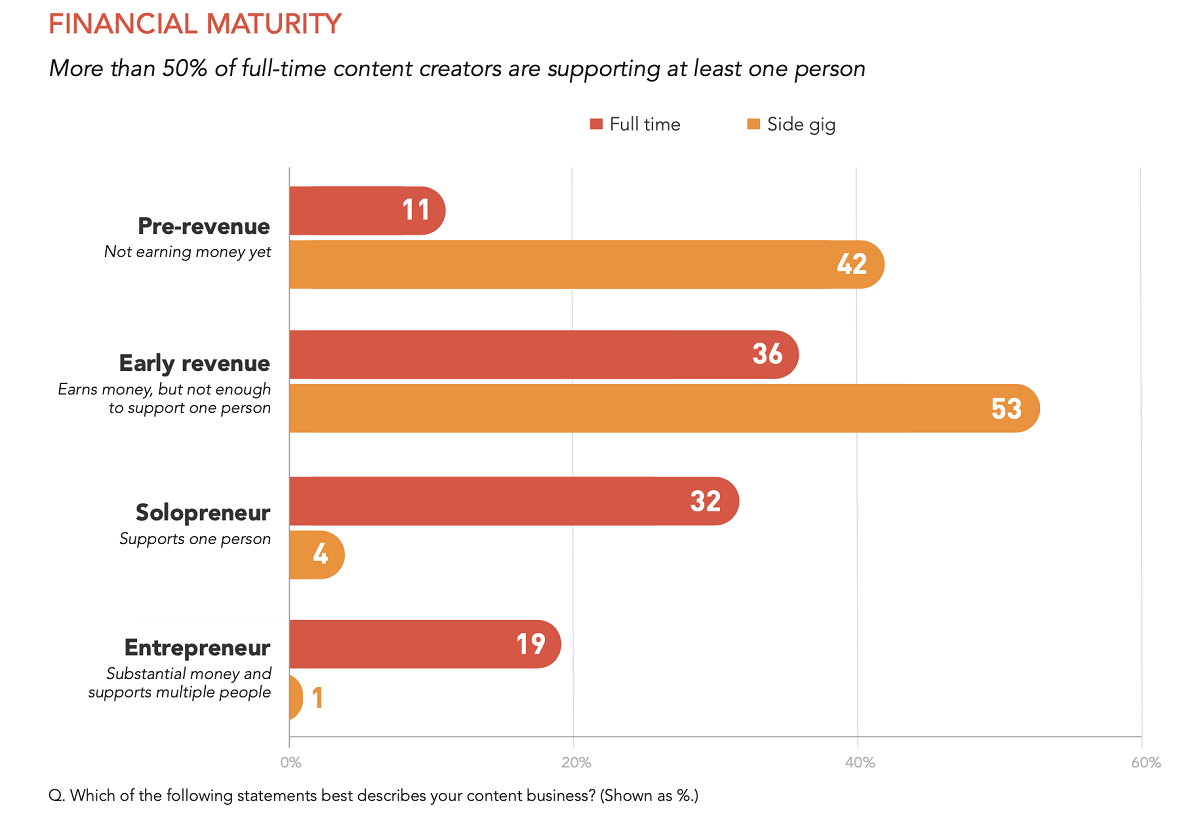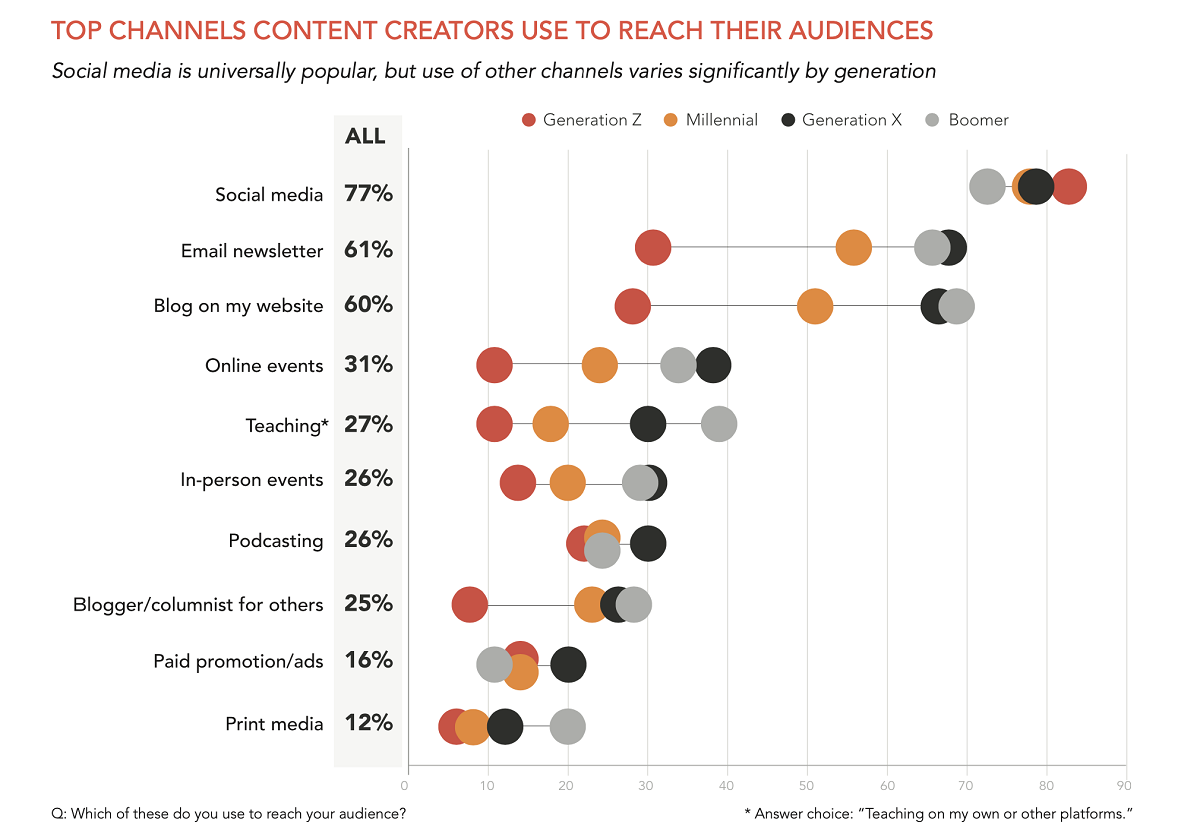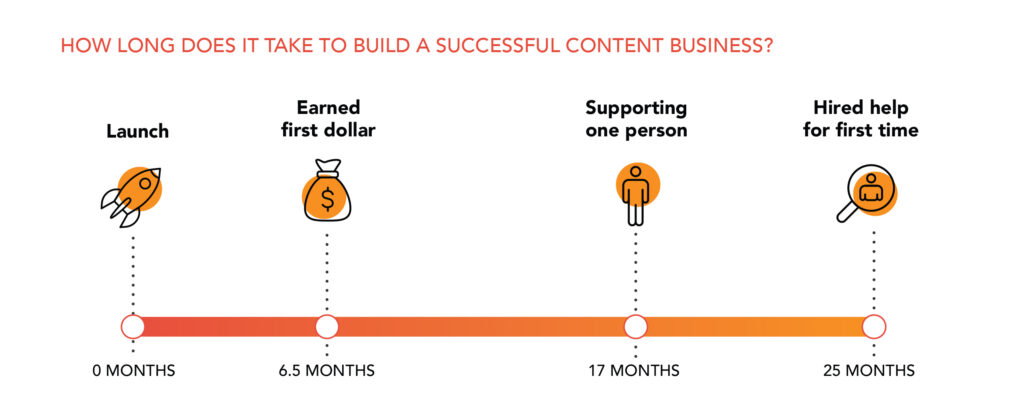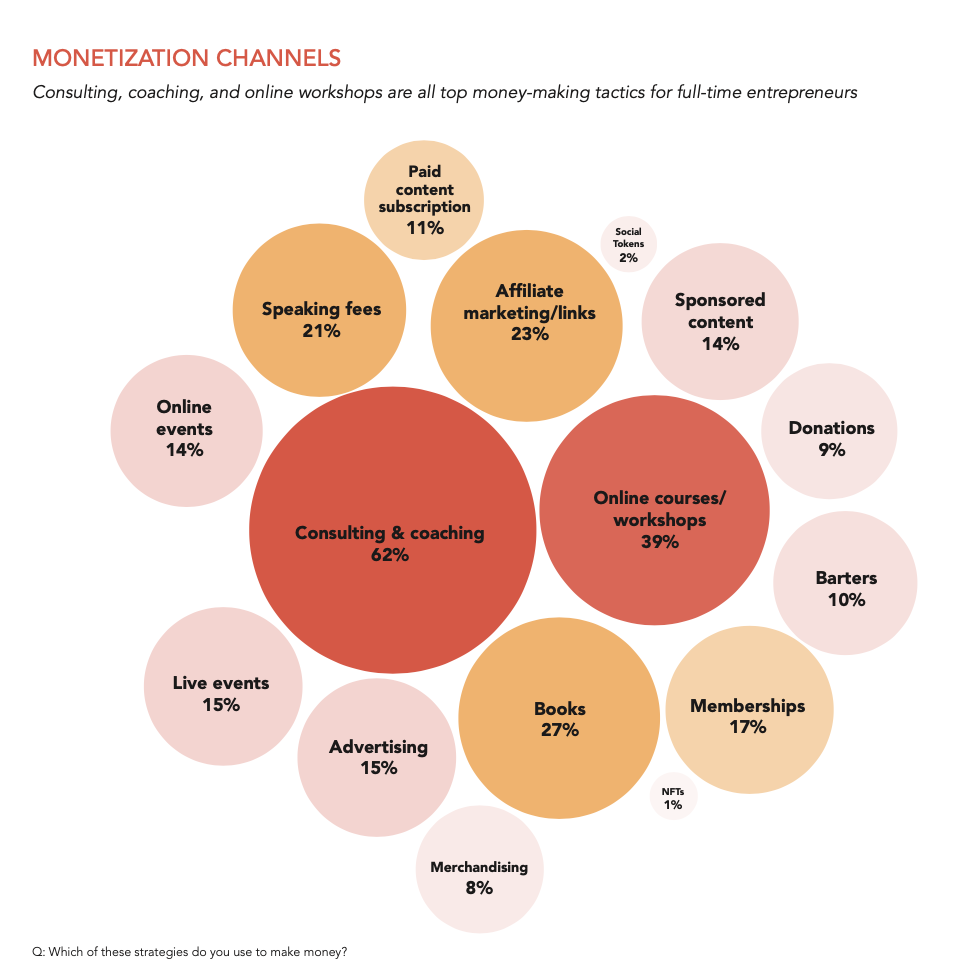
READ MORE: 2022 Creator Economy Benchmark Research (The Tilt)
When creators are profiled in the media, journalists usually focus on one of two extremes: Celebrity influencers who gain massive followings on platforms like TikTok… and lifestyle creators barely eking out a living.
New research paints a different picture. Most full-time content creators fly under the radar, building financially sustaining businesses and fulfilling careers by appealing to smaller, niche audiences.
They don’t need millions of followers to make money, but they do need expertise in marketing, sales, finance, and social tech… and, of course, content creation.
“The Creator Next Door,” published by The Tilt, a service aimed at helping creator’s professionalize their service, found that most creators are far from wealthy, but that more than half have a content business that supports at least one person, and 44% are the primary source of income in their households.

Full-time content creators who are making money expect to generate more than $100,000 in revenue in 2022. But there’s a big caveat: That average accounts for a relatively small number of high flyers who earn handsomely. The median revenue is half that: $50,000.
Understandably, most of the 1,000 creators surveyed — even those who say they’re self- supporting — would like to earn more (on average 1.5 times more).
In fact, per this survey, most creators are not primarily motivated by wealth or celebrity.
“Other factors like independence, flexibility, and enjoyment are important parts of the compensation equation,” says The Tilt founder Joe Pulizzi.
CRUSHING IT IN THE CREATOR ECONOMY:
The cultural impact a creator has is already surpassing that of traditional media, but there’s still a stark imbalance of power between proprietary platforms and the creators who use them. Discover what it takes to stay ahead of the game with these fresh insights hand-picked from the NAB Amplify archives:
- The Developer’s Role in Building the Creator Economy Is More Important Than You Think
- How Social Platforms Are Attempting to Co-Opt the Creator Economy
- Now There’s a Creator Economy for Enterprise
- The Creator Economy Is in Crisis. Now Let’s Fix It. | Source: Li Jin
- Is the Creator Economy Really a Democratic Utopia Realized?
This is particularly true for full-time creators. Over 80% of full-timers say enjoyment, flexible work hours, and independence are top benefits of the content creator’s life, while just 43% point to “earning more than at a traditional job.”
“Content businesses are not get-rich-quick schemes for entrepreneurs, but they are a path to making money on one’s own terms. And a significant number can’t imagine doing anything else.”
Two-thirds of content creators said the industry is too dependent on Big Tech like Meta and Google and expressed a desire to try to take back control of their audiences but just 29% say they know what Web3 means. Web3 is often touted as a way for creators to take back control from Big Tech intermediaries and assert independence, but this study shows there’s still much work to be done on that front.
YOUR ROADMAP TO WEB3:
Does web3 offer the promise of a truly decentralized internet, or is it just another way for Big Tech to maintain its stranglehold on our personal data? Hand-picked from the NAB Amplify archives, here are the expert insights you need to understand web3’s potential and stay ahead of the curve on the information superhighway:
- Magnificent Obsession: Why Are We in Love With Web3?
- Web3 and the Battle For the Soul of the Internet
- Web 2.5 Is Just… Awkward
- Avatar to Web3: An A-Z Compendium of the Metaverse
- Brave New World? Sure, Just Click Here
Nor are all content creators are twentysomethings. Some 40% of survey takers are Gen X (that is, people currently in their 40s and 50s). And age plays a big part in the type of content businesses people build. Creators over the age of 40 are significantly more likely to reap the benefits of owned channels — like email newsletters, blogging, and event hosting — while younger creators rely more on social channels.

“It’s not that older content creators don’t use social media, but they don’t exclusively depend on it,” says Pulizzi. “Being a creator is only fractionally about producing content. On average, full-time content creators spend about half their time creating content. The other half is spent on business issues like content distribution, promotion, marketing, sales, and administration/operations.”
As one respondent to the survey said: “People think I spend all my time filming new videos in beautiful places. What they don’t see is the sales meetings, social engagement, SEO, constant travel, finances… all the unglamorous parts of publishing great content.”

No matter what people say about low barriers to entry for creators, it takes time to begin to earn a decent living. The Tilt pegs this at 17 months and says that this time period may be the single biggest stumbling block to success.
“Do they have enough capital (usually savings, for creators) to survive the 17-month runway? Remember: It takes over six months for a full-time creator to make their first dollar, then another 10+ months to be self-supporting.”
Perhaps the biggest take-away is that wealth is not the only compensation for content creators: there’s a standard of living they believe they are achieving outside of the command of a corporate job.
Indeed, just 1% regret their decision to become content creators. As one survey taker put it: “Freedom from a boss, time constraints, and location constraints. And freedom to pursue my own wealth (financial, health, personal) and not someone else’s.”



